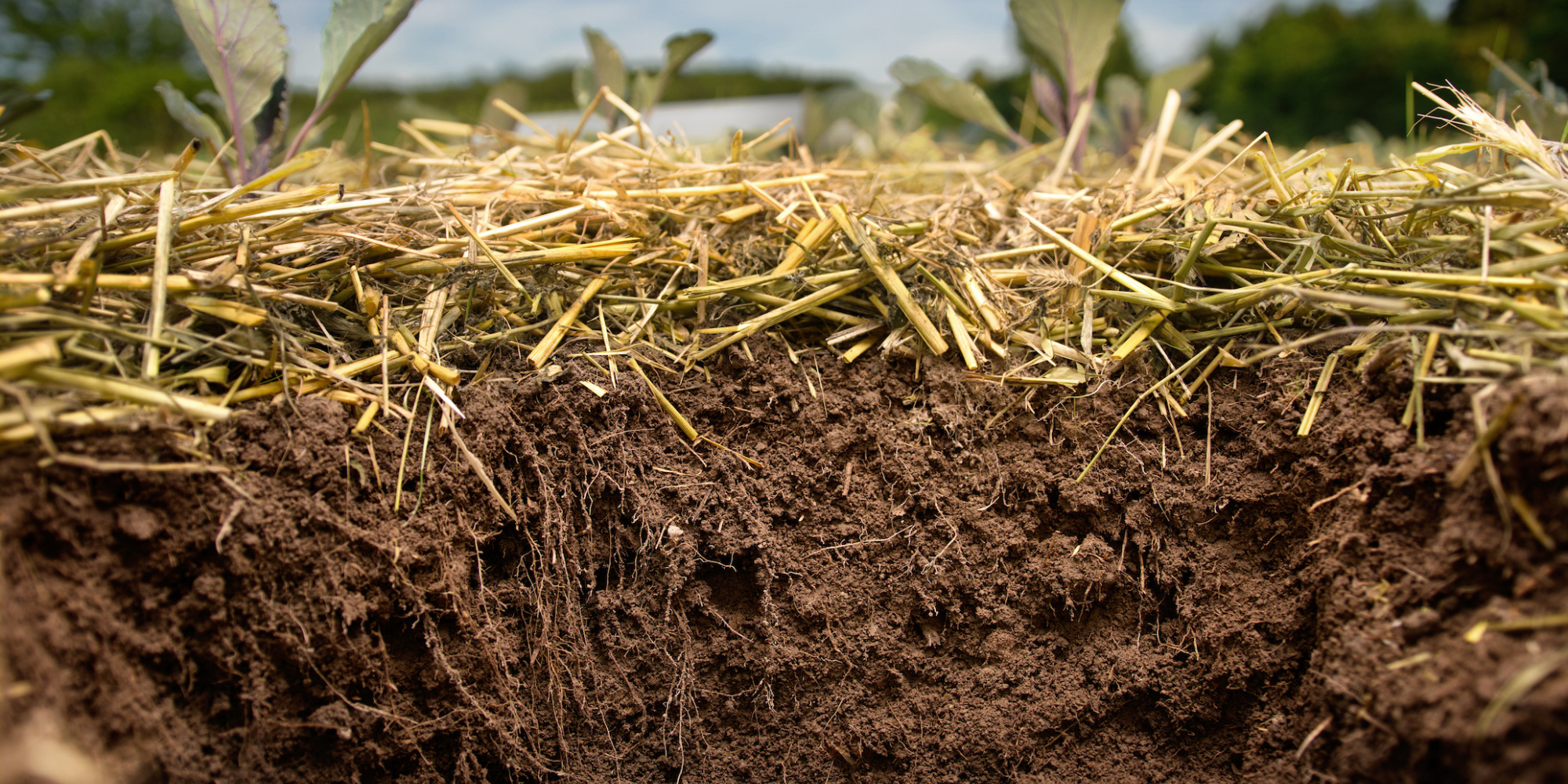Mulching systems incorporate four pillars of soil fertility: permanent cover, permanent roots, minimal soil invasion and maximum biodiversity.
How can this be implemented in vegetable cultivation? Mulch direct planting in 4 steps.
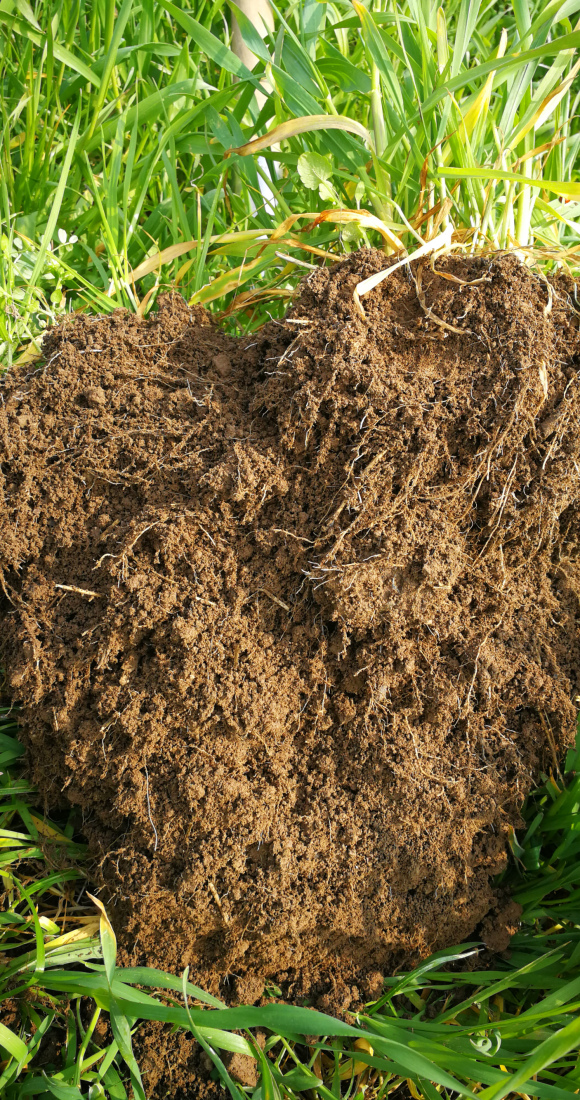
1. Tilth formation
Basic prerequisite for reduced soil tillage
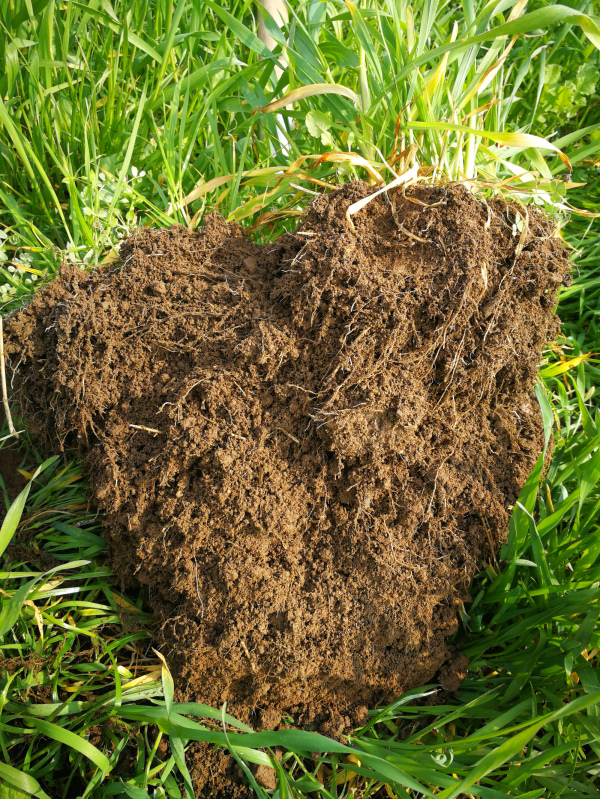
1. Tilth formation
Basic prerequisite for reduced soil tillage
In order to be able to plant vegetables without tilling the soil, the most important prerequisite is soil tillage. To do this, compacted areas are broken up in the autumn when the soil is warm and dry and the vegetable beds are laid out with permanent tracks. The seedbed is prepared as it will be needed for the planned vegetable crop in the following year. A level soil surface and the absence of perennial weeds deserve special attention.The tilth created by mechanical tillage is incorporated into the soil through the intensive rooting of an overwintering catch crop and thus stabilized. We mainly use rye-corn, triticale or oats combined with leguminous plants as catch crops desiring high biomass yields.
The soil emerges from the winter with optimal tilth, so that further tillage in the spring would be neither useful nor necessary.
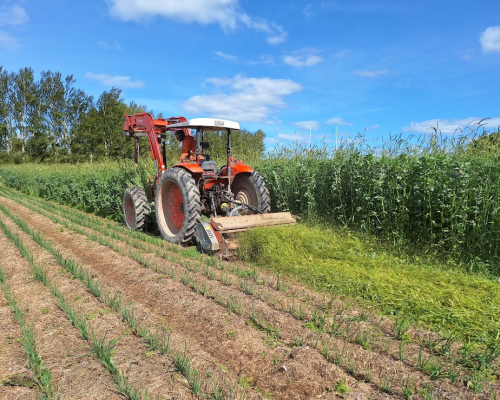
2. Establishing a mulch layer
Protective layer and food for soil life
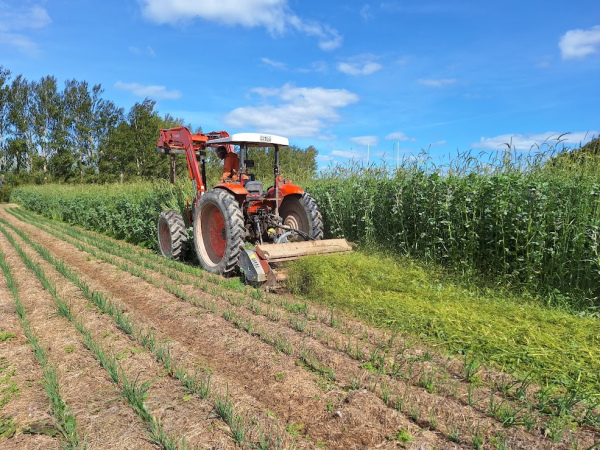
2. Establishing a mulch layer
Protective layer and food for soil life
Cover crops grown through winter have reached a yield between 7 and 12t of dry matter per hectare. Shortly before planting, the cover crop is mown close to the ground creating a mulch layer.Additional mulch may need to be added to achieve a uniform layer of 8cm (depending on the structure of the material), a desirable level for weed suppression, approximately 15t DM/ha.
Fine and coarse material (2-10cm) compliment each other well: the fine material darkens the soil and the coarse material holds the mulch layer together and promotes air exchange. In the case of early plantings or if no cover crop could be established prior to cultivation, the mulch layer can be provided for entirely by transfer mulch.
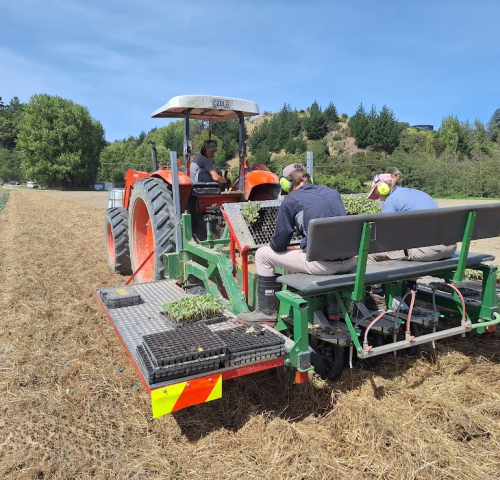
3. Planting
Direct planting into the mulch without soil cultivation
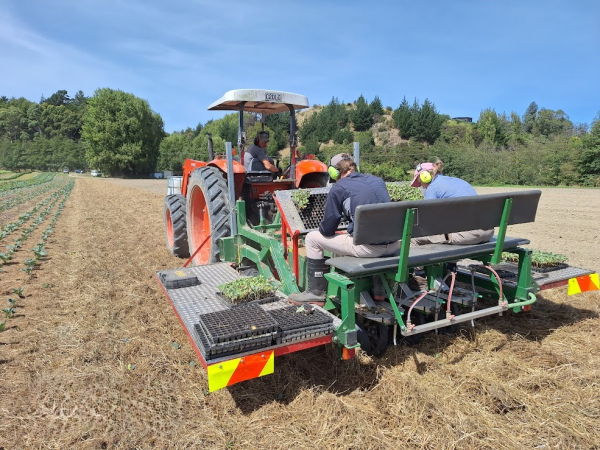
3. Planting
Direct planting into the mulch without soil cultivation
With the MulchTec Planter seedlings can be planted or seeds sown, directly into the mulch covered soil. When transplanting it is possible, in the same step, to apply fertiliser under the roots: bridging the initially slow mineralisation of nutrients from the mulch with a ‘boost fertilisation’, promoting rapid young growth of the crop.It is recommended that sensitive plants are not planted into the mulch until after the last frost and that if silage mulch is used, that planting is not prior to 10 days from the time of spreading the silage mulch, to prevent gassing damage.
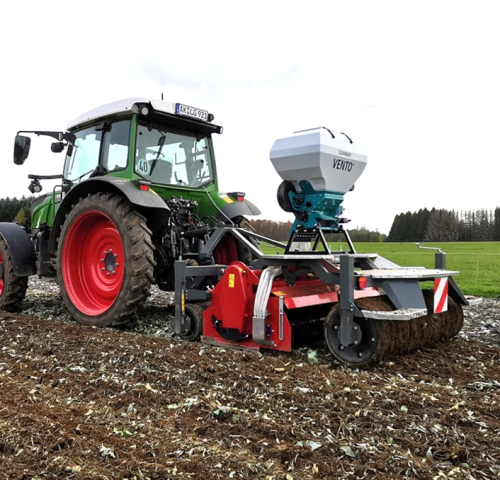
4. Maintaining ground cover
Feed soil life over the winter
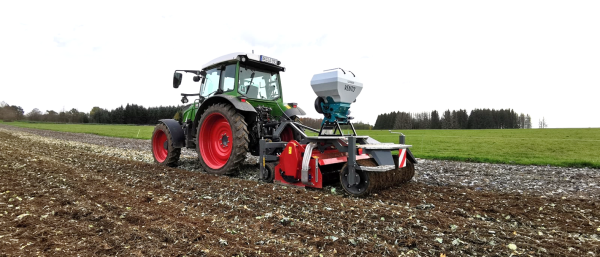
4. Maintaining ground cover
Feed soil life over the winter
After the harvest, the cycle starts again. For a long time the remaining mulch and crop residues were incorporated into the soil, creating a seedbed for sowing a cover crop. This decimated and starved the soil life.Now, with the use of the MulchTec RotoSeeder, we make a shallow full-surface undercut of crop and mulch residues and any weeds that have emerged. The MulchTec RotoSeeder has overlapping angle blades working in reverse and guiding the residues upwards inside the machine, creating a space free from the flow of material.
Cover crop seeds are introduced into this space with a seeder bar using an air blower, before the residues are deposited once again onto the soils surface, covering the cover crop seeds. This allows for a continuous ground cover, establishment of a winter cover crop and minimal soil disturbance.
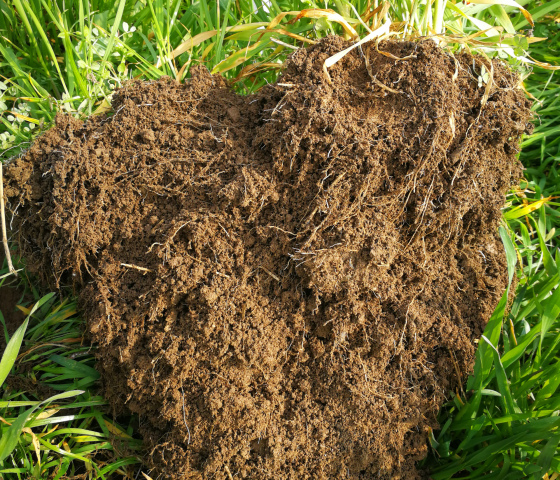
1. Tilth formation
Basic prerequisite for reduced soil tillage

1. Tilth formation
Basic prerequisite for reduced soil tillage
In order to be able to plant vegetables without tilling the soil, the most important prerequisite is soil tillage. To do this, compacted areas are broken up in the autumn when the soil is warm and dry and the vegetable beds are laid out with permanent tracks. The seedbed is prepared as it will be needed for the planned vegetable crop in the following year. A level soil surface and the absence of perennial weeds deserve special attention.The tilth created by mechanical tillage is incorporated into the soil through the intensive rooting of an overwintering catch crop and thus stabilized. We mainly use rye-corn, triticale or oats combined with leguminous plants as catch crops desiring high biomass yields.
The soil emerges from the winter with optimal tilth, so that further tillage in the spring would be neither useful nor necessary.
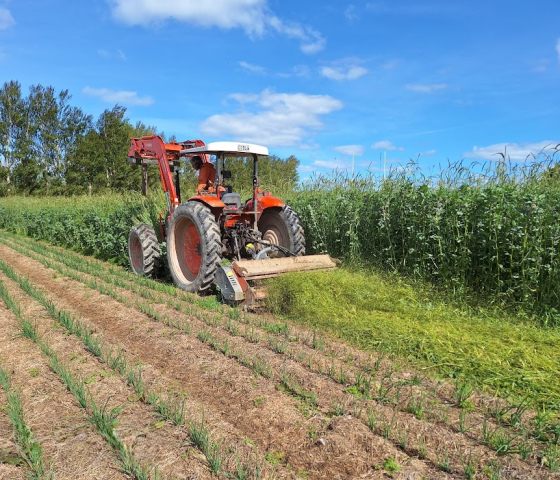
2. Establishing a mulch layer
Protective layer and food for soil life

2. Establishing a mulch layer
Protective layer and food for soil life
Cover crops grown through winter have reached a yield between 7 and 12t of dry matter per hectare. Shortly before planting, the cover crop is mown close to the ground creating a mulch layer.Additional mulch may need to be added to achieve a uniform layer of 8cm (depending on the structure of the material), a desirable level for weed suppression, approximately 15t DM/ha.
Fine and coarse material (2-10cm) compliment each other well: the fine material darkens the soil and the coarse material holds the mulch layer together and promotes air exchange. In the case of early plantings or if no cover crop could be established prior to cultivation, the mulch layer can be provided for entirely by transfer mulch.
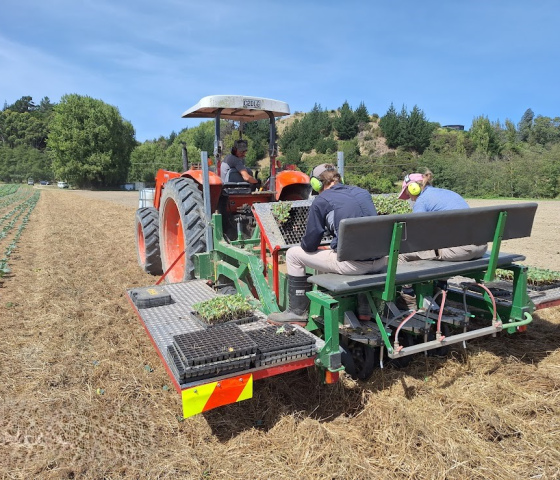
3. Planting
Direct planting into the mulch without soil cultivation

3. Planting
Direct planting into the mulch without soil cultivation
With the MulchTec Planter seedlings can be planted or seeds sown, directly into the mulch covered soil. When transplanting it is possible, in the same step, to apply fertiliser under the roots: bridging the initially slow mineralisation of nutrients from the mulch with a ‘boost fertilisation’, promoting rapid young growth of the crop.It is recommended that sensitive plants are not planted into the mulch until after the last frost and that if silage mulch is used, that planting is not prior to 10 days from the time of spreading the silage mulch, to prevent gassing damage.
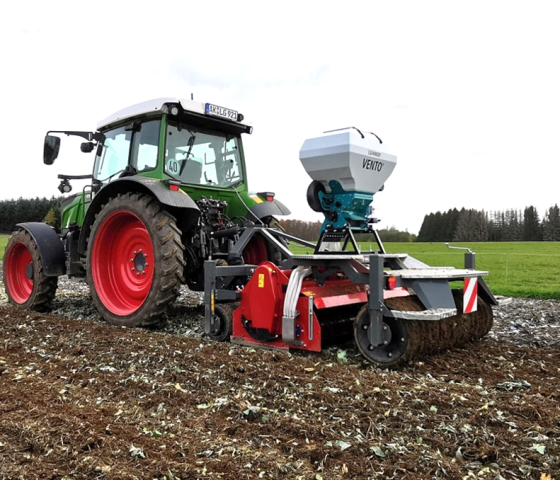
4. Maintaining ground cover
Feed soil life over the winter

4. Maintaining ground cover
Feed soil life over the winter
After the harvest, the cycle starts again. For a long time the remaining mulch and crop residues were incorporated into the soil, creating a seedbed for sowing a cover crop. This decimated and starved the soil life.Now, with the use of the MulchTec RotoSeeder, we make a shallow full-surface undercut of crop and mulch residues and any weeds that have emerged. The MulchTec RotoSeeder has overlapping angle blades working in reverse and guiding the residues upwards inside the machine, creating a space free from the flow of material.
Cover crop seeds are introduced into this space with a seeder bar using an air blower, before the residues are deposited once again onto the soils surface, covering the cover crop seeds. This allows for a continuous ground cover, establishment of a winter cover crop and minimal soil disturbance.

 Mulching systems incorporate four pillars of soil fertility: permanent cover, permanent roots, minimal soil invasion and maximum biodiversity.
Mulching systems incorporate four pillars of soil fertility: permanent cover, permanent roots, minimal soil invasion and maximum biodiversity.
